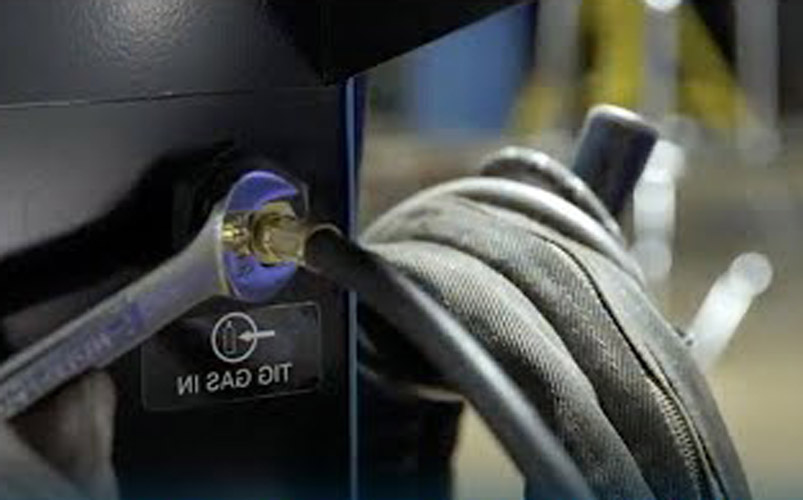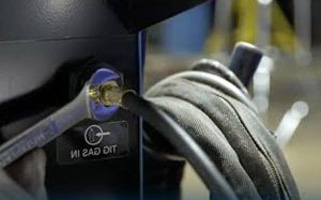TIG welding is a precise and versatile welding technique that requires the use of shielding gas to protect the weld from contamination. Shielding gas is essential in TIG welding, as it prevents the weld from reacting with atmospheric gases like oxygen, nitrogen, and hydrogen, which can compromise the quality of the weld. Choosing the right shielding gas for TIG welding can be challenging, especially for beginners. Therefore, we have put together this comprehensive guide to help you understand everything you need to know about shielding gas for TIG welding.

What is TIG welding and why is shielding gas important?
TIG welding, also known as Gas Tungsten Arc Welding (GTAW), is a welding process that uses a non-consumable tungsten electrode to produce the weld. The weld area is protected from atmospheric gases by a shielding gas that flows through a nozzle surrounding the electrode. Shielding gas is essential in TIG welding because it prevents the weld from reacting with atmospheric gases, which can cause porosity, contamination, and other defects. Shielding gas also helps to stabilize the arc, improve weld penetration, and reduce spatter.
Different types of shielding gas for TIG welding
There are several types of shielding gas used for TIG welding, each with its own unique properties, advantages, and disadvantages. The most commonly used shielding gases for TIG welding are argon, helium, argon-helium mixtures, carbon dioxide, and nitrogen.
Argon gas for TIG welding – pros and cons
Argon gas is the most commonly used shielding gas for TIG welding because it is inert, readily available, and affordable. Argon gas provides excellent arc stability, penetration, and bead appearance, making it ideal for welding non ferrous metals like aluminum, magnesium, and titanium. However, argon gas is not suitable for welding ferrous metals like steel, as it does not provide enough heat for adequate penetration.
Helium gas for TIG welding – pros and cons
Helium gas is another popular shielding gas for TIG welding because it provides a hotter arc than argon, making it ideal for welding thick materials and producing deep weld penetration. Helium gas also provides excellent weld bead appearance and can be used for welding non-ferrous metals like aluminum, copper, and brass. Helium gas is more expensive than argon and can be challenging to control, leading to increased spatter and porosity.
Argon-helium mixtures for TIG welding – pros and cons
Argon-helium mixtures are a popular choice for TIG welding because they combine the benefits of both gases. Argon-helium mixtures provide a hotter arc than argon but are more stable than helium, making them ideal for welding thick materials and producing deep penetration. Argon-helium mixtures can also be used for welding both ferrous and non-ferrous metals. However, argon-helium mixtures are more expensive than argon and can be challenging to control, leading to increased spatter and porosity.
Carbon dioxide gas for TIG welding – pros and cons
Carbon dioxide gas is a popular shielding gas for TIG welding because it provides a hotter arc than argon and is more affordable than helium. Carbon dioxide gas is ideal for welding ferrous metals like steel because it provides excellent penetration and weld bead appearance. However, carbon dioxide gas can be challenging to control, leading to increased spatter and porosity. Carbon dioxide gas is also not suitable for welding non-ferrous metals like aluminum, magnesium, and titanium.
Nitrogen gas for TIG welding – pros and cons
Nitrogen gas is a less common shielding gas for TIG welding, but it can be used for specific applications. Nitrogen gas is ideal for welding stainless steel because it provides excellent penetration and weld bead appearance. Nitrogen gas is also more affordable than argon and helium, making it an attractive option for some welders. Overall, nitrogen gas is not suitable for welding non-ferrous metals like aluminum, magnesium, and titanium.
Choosing the right shielding gas for your TIG welding project
Choosing the right shielding gas for TIG welding project depends on several factors, including the type of metal being welded, the thickness of the material, and the welding position. For welding non-ferrous metals like aluminum, magnesium, and titanium, argon gas is the best choice. For welding ferrous metals like steel, carbon dioxide or argon-helium mixtures are the best choices. For welding thick materials, helium or argon-helium mixtures are the best choices. For welding in the overhead position, argon-helium mixtures or carbon dioxide are the best choices.
Tips for using shielding gas on welding
Using shielding gas for TIG welding requires proper setup and technique to achieve optimal results. Here are some tips for using shielding gas for TIG welding:
- Ensure that the gas flow rate is set correctly. Too much gas can cause turbulence and waste gas, while too little gas can lead to contamination and porosity.
- Use a gas lens to improve gas coverage and reduce turbulence.
- Maintain a consistent distance between the nozzle and the workpiece to ensure consistent gas coverage.
- Use a clean, dry gas supply to avoid contamination.
- Use a gas flow meter to ensure accurate gas flow rates.
- Keep the gas nozzle clean and free from debris to maintain optimal gas coverage.
Common mistakes to avoid when using shielding gas for TIG welding
Using shielding gas in TIG welding requires proper setup and technique to achieve optimal results. Here are some common mistakes to avoid when using shielding gas for TIG welding:
- Using the wrong type of shielding gas for the material being welded.
- Using too much or too little gas flow rate.
- Not maintaining a consistent distance between the nozzle and the workpiece.
- Using a dirty or contaminated gas supply.
- Not using a gas flow meter to ensure accurate gas flow rates.
- Using a dirty or damaged gas nozzle.
Importance of selecting the right shielding gas for TIG welding
Selecting the right shielding gas for TIG welding is essential for achieving high-quality welds. The choice of shielding gas depends on several factors, including the type of metal being welded, the thickness of the material, and the welding position. Each type of shielding gas has its own unique properties, advantages, and disadvantages. Therefore, it is crucial to choose the right shielding gas for your TIG welding project to achieve optimal results. By following the tips and avoiding common mistakes outlined in this guide, you can ensure that your TIG welding projects are successful and produce high-quality welds every time.
